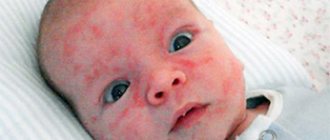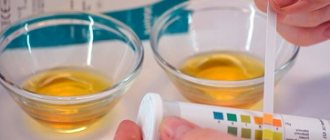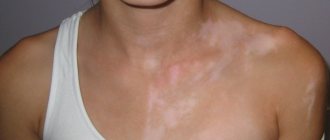Skin structure
The skin consists of three main layers: epidermis, dermis and hypodermis.
It acts as a protective shell around the human body. The topmost layer is the epidermis. It includes several layers of cells called keratinocytes. They begin life at the very bottom of the epidermis and then gradually move to the topmost layer. As soon as they come to the surface, they lose their nuclei, are filled with keratin and thus form the stratum corneum. This is a semi-permeable shield that consists of corneocytes connected by lipids and protein complexes. The stratum corneum serves as a barrier, protecting the body from external attacks.
The surface of the epidermis is covered with a mixture of sweat and sebum, referred to as a “hydrolipid film.” This oily substance moisturizes the skin and forms an antibacterial and antifungal barrier.
Located below the epidermis, the dermis serves as a supporting structure and gives the skin elasticity and firmness. Among other things, this layer contains elastin and collagen fibers.
The hypodermis is the deepest layer of the skin. It is mainly composed of fat cells called adipocytes, which protect the body from temperature fluctuations and form a “protective mattress” against the pressure to which the skin is subjected.
Vesiculopustulosis in children: what is it, what are the causes of its occurrence in newborns, how to treat?
Vesiculopustulosis is an unpleasant but harmless disease that has a different nature and is characterized by inflammation of the entrance openings of the sweat glands in children. Occurs in the first days of a baby's life. If you consult a specialist in time and carry out competent treatment measures, the disease does not pose any threat to the child.
The main causes and symptoms of vesiculopustulosis in newborns
Infection with vesiculopustulosis of newborns occurs in two cases:
- in a maternity hospital, where infection is constantly present, despite sanitary treatment of the premises;
- from contact with an infected person.
The disease is caused by staphylococci, streptococci, intestinal infections, fungus, and Klebsiella. The risk group primarily includes newborns:
- with weak immunity in the mother;
- bottle-fed;
- living in poor sanitary and hygienic conditions;
- patients with diathesis.
Due to the fact that the immune system in children is not formed, the pathogen, entering the sweat glands, begins to actively multiply, which causes an acute course of the disease.
The main symptom is a pink rash on the body, which in a short period of time turns into transparent blisters with liquid inside.
The manifestation is observed in places where sweat glands are most concentrated: in the folds of the skin, in the armpits, on the buttocks and back (you can see what the disease looks like in the photo).
Nonspecific symptoms include:
- high body temperature;
- child's anxiety, moodiness, tearfulness;
- disturbance of appetite and sleep patterns;
- bowel disorder.
How to diagnose the disease?
Treatment requires an accurate determination of the type of pathogen, so a culture of the contents of the vesicles is also taken. On the recommendation of a doctor, other tests may be prescribed to exclude concomitant infections.
How to treat?
Mild vesiculopustulosis can be treated independently at home, but under the supervision of a pediatrician. Parents should adhere to all prescriptions and instructions and not prescribe self-treatment. This approach can only worsen the course of the disease. Complicated cases require more careful monitoring in the pathology department of the maternity hospital, usually in the infectious disease ward.
Application of local treatment
The baby's skin should be treated with a solution of Furacilin or low concentration of potassium permanganate.
Places where the rash accumulates are cauterized with Brilliant green solution, Fukortsin and similar topical agents. The procedure should be carried out several times a day.
You need to pierce large blisters with a special sterile needle, then remove the pus with cotton swabs and treat the skin with the indicated products.
Treatment of a newborn's skin with an ultraviolet lamp, which can be purchased at medical supply stores, gives positive dynamics. During illness, you should carefully monitor the baby’s hygiene and use clothes and diapers that have been ironed on both sides.
General treatment using potent antibacterial drugs
In special cases, when complications begin to develop, antibiotics can be used, which are selected by the doctor individually, depending on the pathogen identified by the results of the tests. Additionally, antipyretics and vitamins are prescribed. If an abscess or cellulitis develops, your doctor may decide to perform surgery.
Preventive measures
The main measure that parents should take to prevent many diseases in children is observing the rules of hygiene and caring for babies. There are no specific techniques for preventing vesiculopustulosis, so you need to adhere to general recommendations:
- regular examination of women during pregnancy for infectious diseases, if necessary, timely treatment;
- compliance with sanitary standards in the room where the newborn lives - wet cleaning, ventilation, maintaining temperature conditions;
- baby hygiene - daily washing, changing linen and clothes, treating the umbilical wound until it is completely healed, caring for the folds of the baby’s skin.
Specific features of newborn skin
A child's skin has the same structure as that of adults, but it does not yet have all its functions. Fragile and not yet fully developed, it takes three years to strengthen before it can properly perform its role as a protective barrier. These features are explained by several factors:
At birth, the pH of the skin is close to neutral. Gradually the pH decreases, becoming more acidic. This difference means that a child's skin is more sensitive to infections and irritations.
The hydrolipid film in infants is thinner than in adults. Therefore, it is less effective in protecting the epidermis from drying out and dehydration. As a result, the child's skin is much more vulnerable.
The stratum corneum is also more fragile. Corneocytes do not connect as well, meaning the layer is more permeable to external factors and infections. The dermis is three times thinner.
Relative to body weight, the surface area of a child's skin is 3 and 5 times greater than that of an adult. This means that the substance that manages to penetrate the skin becomes significantly more concentrated in the body, increasing the risk of toxicity.
New research has led to another major discovery regarding children's skin. The rich cell pool also distinguishes it from adult skin: the skin contains many special cells that are at their maximum strength at birth, but are extremely vulnerable in the first few years of life - the period during which the skin barrier is formed. This wealth of fragile cells is a valuable resource for a child’s skin.
After birth, the unprotected body of a baby is highly susceptible to pathogens that provoke the occurrence of purulent-inflammatory skin diseases. Neonatal vesiculopustosis is one such disorder.
Vesiculopustulosis (vesiculosis) is an infectious skin disorder in newborns. It is characterized by the appearance of a pustular rash on the body and a mild intoxication syndrome.
If treatment is started on time, the disease goes away quickly without any complications.
Symptoms in a child
The clinical picture of the disease largely depends on the individual characteristics of the child’s body. In newborns with normal immunity, signs of general body intoxication are usually absent. Manifestations such as weakness, drowsiness, loss of appetite, and apathy appear in underweight babies and in children born prematurely. Most often, these symptoms are absent, and the symptoms consist of the appearance of skin rashes.
Clinical manifestations of vesiculopustulosis in newborns:
- Formation of pink spots of small diameter in the area of skin folds and places with the greatest localization of sweat glands.
- The highest concentration of rashes is observed in the groin folds, in the area of the armpits, on the neck, in the buttocks, face and hairline.
- The rash tends to merge and form larger lesions.
- Red spots quickly degenerate into pustules - vesicles.
- After a few days, the blisters fill with purulent contents.
- The vesicles dry out, a crust forms in their place, and later peeling and healing are observed.
Healing of the dermis, as a rule, is not accompanied by the appearance of scars and cicatrices, since the damage to the skin during the disease is shallow.
Risk factors
There are certain conditions under which the likelihood of the addition of an infectious pathogen and the occurrence of vesiculopustulosis increases:
- acute or chronic staphylococcal infection in a pregnant woman;
- there is an unfavorable epidemiological situation in the hospital’s neonatal care units;
- poor hand hygiene among health care workers caring for and assisting infants;
- reduced protective system in weakened babies (premature birth, birth trauma, the presence of congenital or acquired pathologies);
- illiterate skin care (hypothermia or overheating, temperature conditions are not observed, there are diaper rashes, cracks, microtraumas on the skin, etc.);
- artificial feeding.
Causes
Vesiculopustulosis is caused by both gram-positive (staphylococcus, streptococcus) and gram-negative (klebsiella, proteus, E. coli) bacteria.
Recently, cases of fungal vesiculopustulosis have become known.
In almost 80% of cases, staphylococci are the culprits of the disease. Carriage of staphylococcal infection is widespread both among postpartum women and among medical personnel.
Predisposing factors for the development of vesiculopustulosis include:
- prematurity (weakened immunity);
- artificial feeding (through mother's milk the child receives antibodies that protect against infections);
- excessively wrapping the child;
- improper child care (unironed diapers, improper skin treatment);
- overheating and high humidity.
The skin of a newborn baby is too delicate and thin; any of the listed factors leads to their damage, followed by infection, and, as a consequence, to the development of vesiculopustulosis.
Types of disease
| Type | Time of occurrence | Causes/source of infection | Notes |
| Congenital | 1 – 3 days of life | Infection occurs through the maternal body if the pregnant woman has chronic infections or if she is a carrier of harmful microorganisms | The baby becomes infected while in the womb, but can also become infected during passage through the birth canal |
| Acquired | One week after birth | Occurs as a result of violation of hygiene rules in care | The risk group consists of prematurely born children, since their immunity is underdeveloped, and they are on artificial feeding, as a result of which the baby’s body does not receive the necessary antibodies that allow it to fight bacterial attack |
Diagnosis of vesiculopustulosis in newborns
The diagnosis is made based on the medical history, as well as a set of clinical and laboratory data.
During an interview with the mother of a sick child, the doctor can establish the fact of violations in care, the presence of risk factors and the primary localization of the bubbles. When examining the baby, rashes are revealed on characteristic areas of the skin.
A general blood test reveals signs of inflammation: a high white blood cell count (leukocytosis) and an increased erythrocyte sedimentation rate (ESR). In addition, bacteriological culture of the contents of the vesicles is carried out in order to identify the pathogen and select effective antibacterial treatment.
Symptoms
The initial signs of vesiculopustulosis, a red-pink pinpoint rash, can easily be mistaken for prickly heat.
If nothing is done at this stage, the following symptoms will occur:
- blisters no larger than a pea with redness around them. The bubbles are filled with a colorless liquid, and they are located near the mouths of the sweat glands;
- a few days later, the liquid in the blisters becomes cloudy, and pustules form;
- blisters rupture within 2–4 days, ulcers form, and then crusts.
The rashes are most often localized in the armpits, on the back of the head, in the hair, inguinal and buttock folds. Blisters tend to coalesce and spread quickly.
The child’s general well-being does not change. Temperature rises of 37 – 37.5 °C are rare.
Infants with a weakened protective system are characterized by a complicated form of the disorder.
In this situation, the manifestations are as follows:
- fever up to 39 °C;
- due to severe intoxication of the body, the area around the mouth dries out;
- The child’s anxiety increases and he is difficult to calm down;
- no appetite.
The number of blisters is determined by the degree of neglect of the disorder.
Symptoms and clinical picture of vesiculopustulosis in newborns
The most characteristic manifestations of vesiculopustulosis are the formation of small blisters filled with clear liquid, spreading throughout the body and scalp. After a few days, the blisters transform into a pustule with purulent contents, after which crusts begin to form.
Symptoms of vesiculopustulosis:
- formation of blisters with serous contents and redness around;
- temperature increase to 38-39 degrees;
- constant anxiety and tearfulness;
- refusal to feed;
- dry lips and mucous membranes of the oral cavity.
When adequate therapy is prescribed, the signs of vesiculopustulosis completely disappear.
Diagnostics
Vesiculopustulosis is diagnosed by a pediatrician. In this case, there is no need to perform laboratory tests and hardware examination.
- The specialist performs a physical examination.
- Interviews parents to find out the time of onset of pathology and symptoms.
If the disease is severe, the following will be prescribed:
- general blood test (with vesiculosis, a large number of leukocytes are detected);
- bacterial culture of the liquid formed in the bubbles (analysis will allow us to identify the causative agent of the disease and select the correct treatment).
The occurrence of various types of complications requires consultation with other specialists with a narrow focus:
- surgeon;
- infectious disease specialist;
- allergist;
- otolaryngologist.
In general, diagnosing the disease does not cause difficulties. The decisive point is the timely identification of the disorder so that the infection does not lead to the development of dangerous complications.
Diagnostic methods
To make a diagnosis, the attending physician conducts a thorough examination of the child, interviews the parents, and prescribes the necessary laboratory tests for vesiculopustulosis to identify the causative agent of the infectious process.
The main methods for diagnosing vesiculopustulosis include:
- physical diagnosis (examination, palpation, auscultation);
- general blood test (increased ESR, leukocytosis);
- bacterial culture of serous contents (determination of the pathogen).
Complications
Complications develop if you do not consult a specialist in time and do not start treatment, and also when the child is weakened.
| Type of complication | Description | Treatment |
| Phlegmon | A purulent-inflammatory lesion of fatty tissue that does not have a clear boundary. The process tends to spread to surrounding tissues. Irreversible consequences may occur | The treatment is carried out by a surgeon. The disorder is difficult to treat. It involves the use of antibiotics and opening of purulent accumulations |
| Abscess | Pus accumulates in various tissues and has clear boundaries | Treated with antibiotics |
| Pseudofurunculosis | Severe inflammation in the sweat glands | Antibiotics and quality skin care |
| Sepsis | Infection of the blood due to the penetration of toxins and bacteria into it, as a result the entire body becomes infected | Treatment is carried out in the intensive care unit using strong antibiotics |
| Ostiomyelitis | Purulent bone tissue infection | Surgery, anti-inflammatory therapy |
| Pneumonia | Pneumonia | Antibacterial therapy in combination with the use of antitussives |
| Omphalitis | Inflammatory processes in the navel area | Daily rinsing with alcohol-based solutions and improved sanitation |
Basic treatment methods and contraindications
The main methods of treating the disease include:
- prescription of broad-spectrum antibiotics (cephalosporins);
- treating the skin with furatsilin several times during the day;
- use of drugs to reduce body temperature (Ibuprofen, Nurofen, Paracetamol);
- opening the pustule followed by treatment with an alcohol solution;
- after the formation of crusts, baths are prescribed with a decoction of chamomile, string, or with the addition of potassium permanganate;
- UV exposure (prevents the spread of bacteria and helps eliminate them, reducing the manifestations of the inflammatory process).
Contraindications:
- allergic reactions to drugs;
- serious diseases of the cardiovascular system.
Treatment
For mild cases of the disease, treatment can be carried out at home. When signs of complications are detected (for example, fever), it is recommended to carry out treatment in a hospital setting.
In any case, it is necessary to exclude the child’s contact with other people.
Treatment recommendations are as follows:
- baths with herbal decoctions, for example, chamomile, string, celandine, have a positive effect. These herbs have anti-inflammatory properties. However, it is recommended to bathe the child less often so that the disease does not spread to healthy areas of the skin. After bathing, smear her with hypoallergenic baby cream for children;
- twice a day, treat the damaged areas with brilliant green or a weak solution of potassium permanganate. This will prevent the spread of infection;
- large blisters are pierced with a needle pre-treated with alcohol, the pus is squeezed out, the wound is cauterized with an alcohol solution, then antibacterial ointment is applied;
- recommended antiseptic ointments for treating damaged skin: Lincomycin and Heliomycin;
- On the recommendation and under the supervision of a specialist, ultraviolet irradiation can be performed. Ultraviolet rays have a disinfecting effect;
- The baby's clothes and diaper must be kept clean and washed with mild hypoallergenic detergents. The linen is ironed on both sides to prevent other infections.
If the disease is severe, the baby is hospitalized and special therapy using antibiotics is prescribed. Tests are performed to identify the causative agent of the disease.
Cephalosporin antibiotics are usually prescribed. If necessary, immunomodulators are used. The dose is selected individually according to the age of the baby.
If the disease is advanced and complications develop, then another treatment is selected that is aimed at combating them.
Treatment regimen for vesiculopustulosis
Treatment of vesiculopustulosis is carried out on an outpatient basis under the supervision of a local pediatrician. High temperatures require hospitalization in an inpatient pediatric ward.
How to treat vesiculopustulosis is determined individually in each case. Drug therapy consists of the use of antibacterial drugs and antipyretics. The affected areas are treated with antiseptic solutions, and if necessary, purulent pustules are opened using a sterile needle.
Prevention
Taking into account the fact that vesiculopustulosis appears in newborns due to transmission of the pathogen from the mother, poor hygiene during care, and various manipulations involving contact with infant skin, preventive measures should be aimed at preventing infection of children's skin with pathogenic microorganisms.
Basic preventive measures:
- in a woman of childbearing age, foci of chronic infections are identified (dental caries, tonsillitis, otitis media, sinusitis, pyelonephritis, cystitis, etc.), and their sanitation is carried out before pregnancy;
- during pregnancy, foci of infection should also be identified and treated, and relapse prevention should be carried out;
- after birth, provide the child with proper care with high-quality hygiene;
- regular visits to the pediatrician;
- avoiding any contact with infected people.
Kinds
Depending on the time of onset of the disease, there are 2 types of vesiculopustulosis:
Congenital form
Manifestations of vesiculopustulosis occur on the first or second day after birth. Accordingly, the child was infected from a mother with chronic or untreated infections, in utero or during childbirth.
Acquired form
Acquired vesiculopustulosis develops on the 5-7th day of a baby’s life due to the presence of predisposing factors.
Vesiculopustulosis in children: what is it, what are the causes of its occurrence in newborns, how to treat?
Vesiculopustulosis is an unpleasant but harmless disease that has a different nature and is characterized by inflammation of the entrance openings of the sweat glands in children. Occurs in the first days of a baby's life. If you consult a specialist in time and carry out competent treatment measures, the disease does not pose any threat to the child.
The main causes and symptoms of vesiculopustulosis in newborns
Infection with vesiculopustulosis of newborns occurs in two cases:
- in a maternity hospital, where infection is constantly present, despite sanitary treatment of the premises;
- from contact with an infected person.
The disease is caused by staphylococci, streptococci, intestinal infections, fungus, and Klebsiella. The risk group primarily includes newborns:
- with weak immunity in the mother;
- bottle-fed;
- living in poor sanitary and hygienic conditions;
- patients with diathesis.
Due to the fact that the immune system in children is not formed, the pathogen, entering the sweat glands, begins to actively multiply, which causes an acute course of the disease.
The main symptom is a pink rash on the body, which in a short period of time turns into transparent blisters with liquid inside.
The manifestation is observed in places where sweat glands are most concentrated: in the folds of the skin, in the armpits, on the buttocks and back (you can see what the disease looks like in the photo).
Subsequently, the rash continues to spread throughout the body, the transparent blisters turn into pustules, and their contents into pus. Sometimes the blisters break through, and ulcers and erosions form in their place. If this does not happen, after a few days the pustules turn into a hard crust, which then disappears.
Nonspecific symptoms include:
- high body temperature;
- child's anxiety, moodiness, tearfulness;
- disturbance of appetite and sleep patterns;
- bowel disorder.
How to diagnose the disease?
Treatment requires an accurate determination of the type of pathogen, so a culture of the contents of the vesicles is also taken. On the recommendation of a doctor, other tests may be prescribed to exclude concomitant infections.
How to treat?
Mild vesiculopustulosis can be treated independently at home, but under the supervision of a pediatrician. Parents should adhere to all prescriptions and instructions and not prescribe self-treatment. This approach can only worsen the course of the disease. Complicated cases require more careful monitoring in the pathology department of the maternity hospital, usually in the infectious disease ward.
Application of local treatment
The baby's skin should be treated with a solution of Furacilin or low concentration of potassium permanganate.
Places where the rash accumulates are cauterized with Brilliant green solution, Fukortsin and similar topical agents. The procedure should be carried out several times a day.
Treatment of a newborn's skin with an ultraviolet lamp, which can be purchased at medical supply stores, gives positive dynamics. During illness, you should carefully monitor the baby’s hygiene and use clothes and diapers that have been ironed on both sides.
General treatment using potent antibacterial drugs
In special cases, when complications begin to develop, antibiotics can be used, which are selected by the doctor individually, depending on the pathogen identified by the results of the tests. Additionally, antipyretics and vitamins are prescribed. If an abscess or cellulitis develops, your doctor may decide to perform surgery.
Preventive measures
The main measure that parents should take to prevent many diseases in children is observing the rules of hygiene and caring for babies. There are no specific techniques for preventing vesiculopustulosis, so you need to adhere to general recommendations:
- regular examination of women during pregnancy for infectious diseases, if necessary, timely treatment;
- compliance with sanitary standards in the room where the newborn lives - wet cleaning, ventilation, maintaining temperature conditions;
- baby hygiene - daily washing, changing linen and clothes, treating the umbilical wound until it is completely healed, caring for the folds of the baby’s skin.










